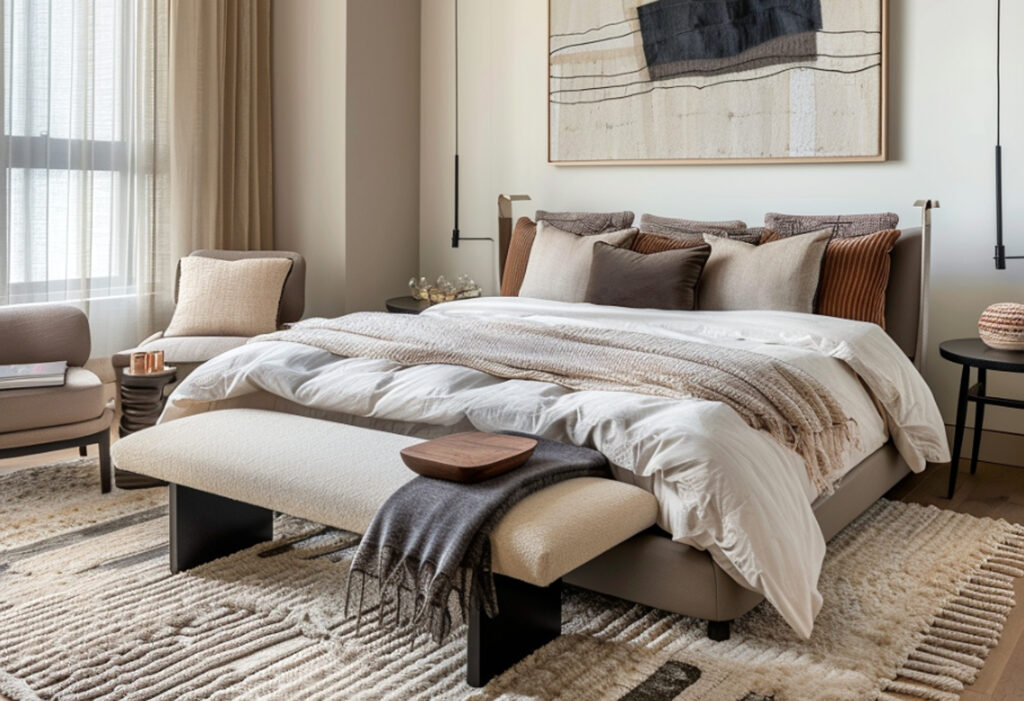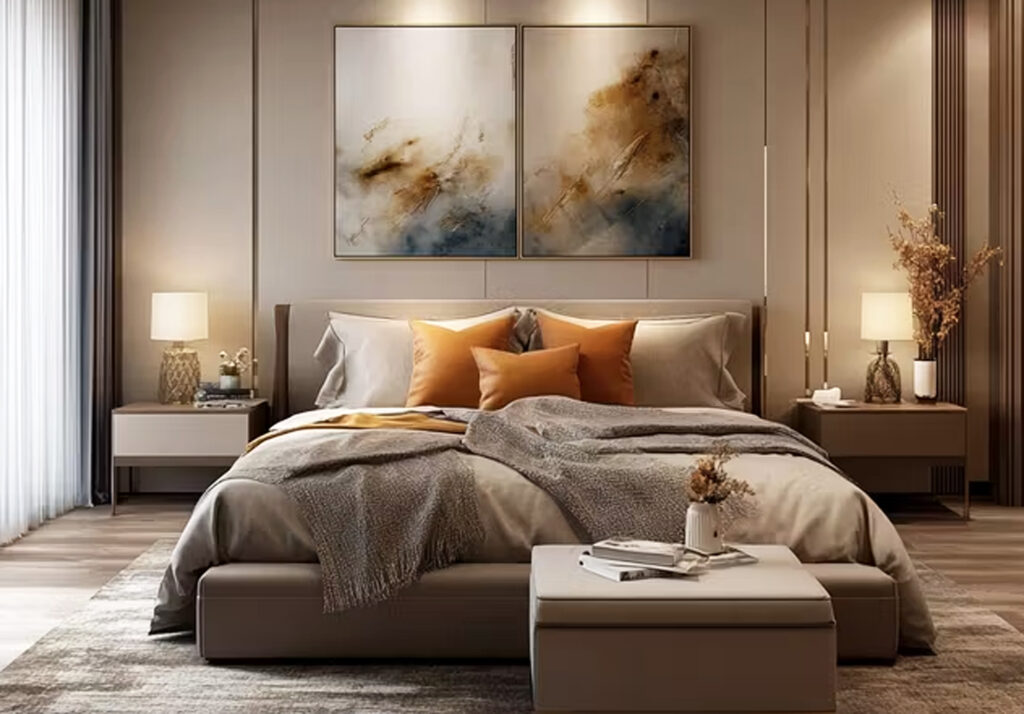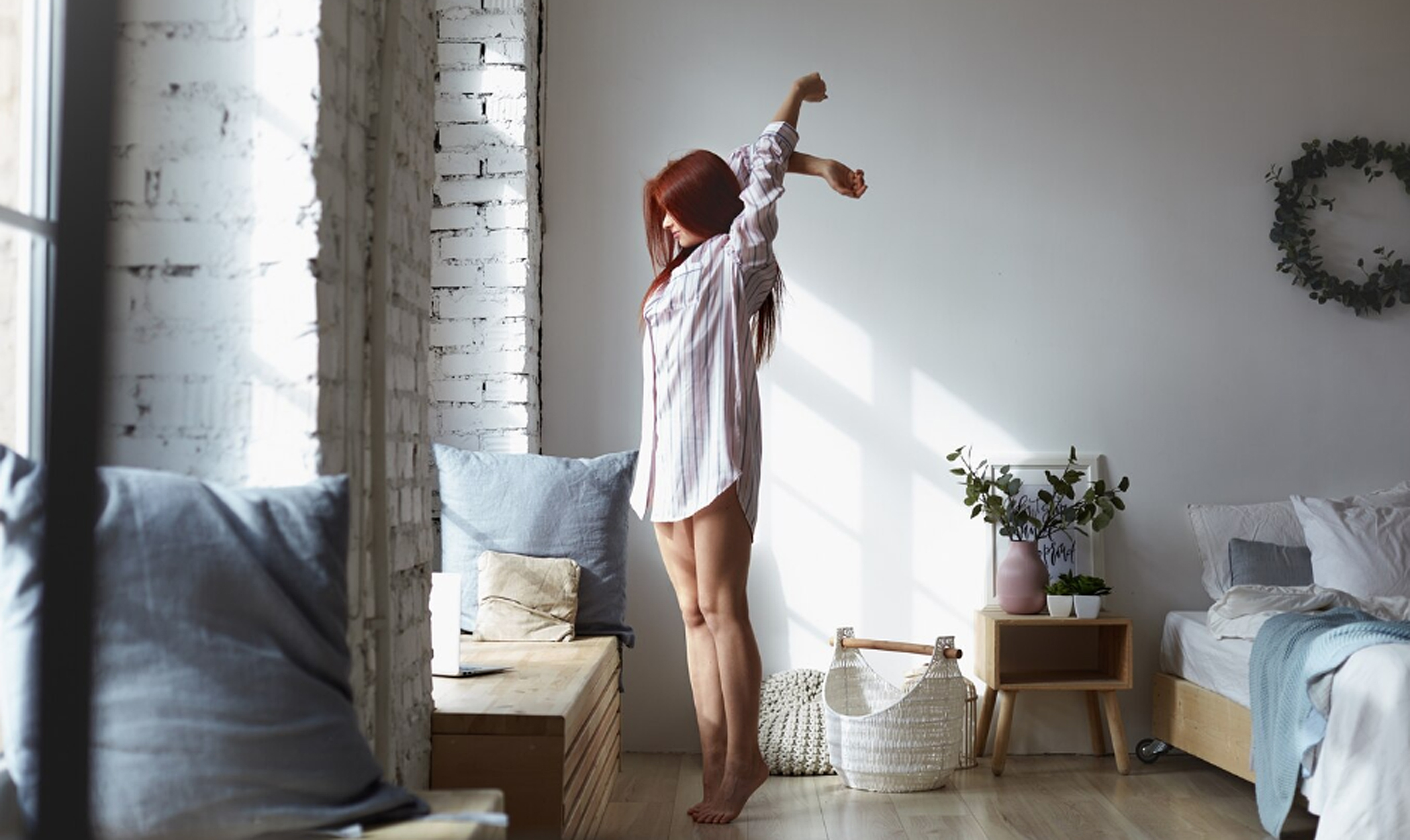Lately, more and more people are telling me they don’t sleep well; they toss and turn or don’t fall asleep until it’s almost time to get up for another day. Their children are struggling as well. It’s sad to hear this because sleep is extremely crucial for our mental and emotional well-being as well as our spiritual health. The lack of quality sleep quickly slows us down, creates brain fog, causes unhealthy food cravings and compulsive eating, slows our metabolism, drains the color from our complexion, etc. We’ve all seen the signs. It is not discriminating and is so prevalent that there seems to be a sleep deficiency epidemic happening in today’s world.
Many factors can contribute to sleepless nights. Some we can change; others we cannot. But don’t despair, the things we CAN change can give immediate results that will help you let go of the harried day and slip into the gentleness of night. “Change” is the operative word; so if your space feels more chaotic than calming, it’s time to make a change.
When you look into your bedroom, how does it make you feel? If you were a guest looking at your bedroom, what would it say to them?
Your bedroom should be your sanctuary—a peaceful retreat from the busyness of life. A restful bedroom isn’t just about aesthetics; it’s about creating a space that supports deep sleep, lowers stress, improves your overall well-being, and invites you to relax. Whether you’re starting fresh or making small changes, here are some tips to help you start creating an uplifting space that allows you to truly unwind.
Choose Calming Colors and Textures
The colors that surround you greatly impact your mood. Keep lively bold colors in the active areas of your home and soft colors in the quiet areas. No matter how much your child begs for an electric blue or hot pink room, do not allow bold colors on the bedroom walls; instead, negotiate those colors for their play areas. For a restful bedroom:
- Opt for soft, muted tones like earthy taupes, warm grays, soft greens, or creamy neutrals for the walls. Then create personality by adding 2 or 3 subtle complimentary colors in the decorative accents.
- Avoid overly bright, bold colors or patterns; these stimulate the mind instead of calming it.
- Add touches of natural textures, such as wood, linen, woven textures, or rattan to create a grounded, cozy vibe.

edwardgeorgelondon.com
Invest in Comfortable Bedding
Your bed is the centerpiece of your sanctuary. That means taking time (which is 3 minutes) to make it every day is a simple change that yields high returns! The act of making the bed shifts the night energy to day energy; then the act of turning back the bedding at night becomes part of the slowing-down ritual. Children can easily do this which also instills a habit they will carry into their adult life. Since the bed is the largest thing in the room, taking time to make it instantly tidies up the room. It’s such a game-changer!
Since the bed is the centerpiece of your sanctuary, invest in high-quality bedding; it is worth every penny when it comes to your sleep quality:
- Choose breathable fabrics like cotton, linen, or bamboo.
- Choose peaceful colors and patterns. Fighting action figures or pirates on sheets do not encourage sleep; they actually do the opposite by causing restlessness.
- Layer your bed with plush pillows, a supportive eco-friendly mattress, and a soft duvet or comforter.
- Keep your bedding clean and fresh to create a 5-star hotel-like experience. Wash the sheets and pillowcases weekly; wash all bedding monthly; and wash the bed pillows (the ones used to lay on) every three months.
TIP: Use fragrance-free, natural laundry products. We spend 1/3 of our life in bed, directly breathing the bedding. Synthetic detergents and fragrances contribute to various health issues and sleeplessness. Do not use conventional dryer sheets either; instead, use wool dryer balls; try adding a few drops of lavender essential oil, or lavender and lemon essential oils to them to create a hint of serenity. Contact me about which essential oil brands are the healthiest brands to use; not all essential oils are created equal. I make all my laundry products and will happily share my recipes with anyone who contacts me for information about essential oils.
Limit Clutter
Clutter creates mental noise which contributes to stress and distracts the mind from relaxing. Clutter is also a magnet for dust, which affects the room’s air quality.
- Keep surfaces like nightstands, dressers, and furniture tidy. Nightstands should hold only essentials—a book or journal, a lamp, and maybe a tray for pocket change.
- To prevent spillage in the bedroom, invest in smart storage solutions and/or baskets for the closet. Take an hour to organize and declutter the closet; make things easy to grab and easy to replace. Then, be sure to close the closet door so that its busyness does not infiltrate the calmness of the room. Even though it may look amazing after you organize it and it has a boutique-like charm, close the door(s).
- Embrace a minimalist mindset—only keep what you love and need in your space. Remember bedrooms are about sleeping; your eyes will be closed most of the time, so there is no need to have excessive knick-knacks filling the space. Move active toys and games to the active areas of the house.
- Remove anything that is staring at the bed, such as pictures/posters of people or animals looking forward, or dolls and stuffed animals watching the bed.

edwardgeorgelondon.com
Embrace Low Lighting
Harsh overhead lights can feel jarring, especially in the evening. To start the slowing down of your day, gradually start quieting the house an hour before bedtime. Turn off overhead lighting, all unnecessary lighting, and dim table lights; this instinctively signals the mind that the day is waning. Think about the length of time it takes for the sun to set; it’s a very gentle process and life slows down to reflect on the day. Interior lighting should mimic nature and respect our natural circadian rhythms. Lighting has a great effect on our senses and sets the mood in the house. For the bedroom:
- Use dimmable lamps or warm LED bulbs for a cozy atmosphere. Add layers of lighting: dimmable overhead lights, bedside lamps, and a rose-tinted night light, if necessary. Providing dimmable lighting allows the flexibility to select bright light for dressing and other daytime tasks with the option to dim for nighttime tranquility.
- Consider blackout window treatments to block streetlights and moonlight which will encourage deeper rest.
TIP: Add a Himalayan salt lamp or fairy lights for a gentle glow that enhances relaxation. The rose tint of the salt lamp does not disrupt the melatonin we require for sleep. This means that if you need to get up in the middle of the night, you will be able to return to sleep more easily.

livspace.com
Limit Electronics (or better yet, remove them)
There should be no screen time 30-60 minutes before going to bed. Screens emit blue light that disrupts our natural sleep-wake cycle. When that is combined with the jumpy imagery on the screen our ability to relax can be greatly impacted, because our stress level and mind have been triggered. Try setting a “digital curfew” at least 30 minutes before bedtime.
- Keep phones away from your bed. If possible place them in another room, such as an adjoining bathroom, or a charger in another area of the house. Set them to “do not disturb”, or “silent mode”, or shut them off.
- Keep TVs out of the bedrooms. Avoid watching TV or scrolling in bed—the bedroom is for rest. Do not watch the news or violent shows for at least 30 minutes before going to bed; free the mind by reflecting on the positive things the day gave you.
- Instead of relying on technology, wind down with a physical book, light stretching, journaling, or meditating while listening to calming music.
Incorporate Soothing Scents and Sounds
Our sense of smell and hearing are directly linked to the brain’s emotional center and that plays a big role in how relaxed we feel:
- Use an essential oil diffuser with lavender, chamomile, or eucalyptus oil a couple of hours before bedtime. Do not run the diffuser while sleeping; the active water energy prevents us from reaching deep sleep. Again, never use commercial synthetic fragrances, plug-ins, scented candles, wax melts, or air fresheners; these are toxic and can lead to respiratory issues and various other health issues. Please take time to do extensive research or contact me for safe essential oil brands. If you desire a calming scent while sleeping, mist your pillow or the neckline of your night clothes by blending essential oil and water in a spray bottle, and then let it carry you into sweet dreams. A peaceful spray can also be misted on your child’s favorite bedtime snuggling item; they will feel loved, safe, and at ease.
- If you live near noise, such as a railroad track or heavy traffic, try a white noise machine or a calming playlist to drown out distractions. If using an electronic device, keep it at least 10-15′ from your head.
- If you live in the country or a quiet neighborhood, open windows when possible to bring in fresh air, gentle breezes, and calming nature sounds.

Run a diffuser for a couple of hours before bedtime to instill peace; do not run it while sleeping.
Add Personal Touches
Finally, a restful bedroom doesn’t have to feel generic. Add calming art that lifts your spirit, display a few cherished items, or use a favorite quilt. The key is to surround yourself with things that bring comfort—not clutter. To make the space your own:
- Hang soothing artwork with gentle forms or curves, or nature-inspired prints. Do not hang images of mountains or water images over the bed. Whatever is placed over the bed affects your energetic field.
- Display a few meaningful items—a favorite book, a picture of you with your spouse, or a favorite poem or message that uplifts you. To add another layer of peace to the room, do not place water next to your bed. Water is a living element and energizes the water in our bodies. If ill and water is necessary, place it below your resting head.
- Your bedroom should embrace you, inviting you to be completely yourself, your true self, to be safe, cozy, centered, and free.
Creating a restful bedroom is about intentional choices that nurture your mind, body, and spirit. With a few thoughtful changes, you can transform your bedroom into a peaceful retreat where you truly rest, recharge, and restore. Try implementing just one or two tips at a time and notice how your space (and your sleep) transforms. Then contact me to schedule a free 1-hour strategy call on ways to take your bedroom to the next level, you will be amazed!


Leave A Comment